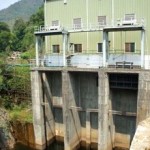
“India’s markets are driven by dynamics, entrepreneurship and creativity – and at the same time defined by idiosyncrasies, contradictions and informality. Developing long-term and socially-accepted solutions, especially in the sensitive fields of water, electricity and housing, requires a deep understanding of the problems that lie below the surface. In this way, one can come up with unique but scalable solutions – and this opportunity is what thrills me every single day.”
– Isabelle-Jasmin Roth,
Director and Head of Urban Planning,
BRIDGE TO INDIA.
The success of international technology companies in India highly depends on their ability to adjust to local parameters. Especially in the dynamic field of renewable energy, the systemic design of business models promises long-term success. BRIDGE TO INDIA, a consulting company based in New Delhi, identified eight factors that help global businesses to develop a successful strategy for India.

With its economy growing nearly 9% per year and a vast population of 1.2 billion, India’s energy demands have increased tremendously over the last few years. The country’s rapid urbanization process has called for new and additional supplies of electricity generation and distribution facilities, infrastructure development and transport requirements. The Confederation of Indian Industry (CII) estimates necessary investments equivalent to USD 475 billion in India’s infrastructure, until 2012. In order to meet the long-term goals of securing the country’s energy requirement of 640 GW by 2030, the power generation scenario requires rapid capacity addition from renewable sources.
Within this context, the Government of India has identified solar energy as an important renewable resource. About 5.000 trillion kWh per year is incident over India’s land area with most parts receiving 4-7 kWh per sqm per day. The National Solar Mission (NSM) targets 20,000 MW grid solar power based on solar thermal and photovoltaic technologies and 2,000 MW of off-grid capacity by 2022. This sector has opened up attractive opportunities for foreign technology companies and investors. However, to successfully establish operations in the renewable energy field is a challenge for most international technology companies till date.
Eight Key Success Factors for Adaptive Business Models in India
Our work with international investors and technology companies setting up their operations in India showed that some crucial success factors are often neglected when designing the Indian business model. This may lead to misguided investments, delay in time and project acquisition. Based on our consulting experience, BRIDGE TO INDIA has identified eight key success factors that help global businesses become successful in India.
- Understand the dynamics of India’s upcoming markets
- Get the relevant information for your purpose
- Create access to relevant networks
- Adapt technology to India’s needs and market trends
- Integrate the informal sector into your core business model
- Focus on developing one successful pilot project – however small
- Think of scale as your largest business opportunity
- Be patient and go with India’s flow
1. Understand the Dynamics of India’s Upcoming Markets
India’s markets are in a uniquely dynamic state. International technology companies entering young, and rapidly developing sectors such as the field of renewable energy, have the choice to either see this as a threat – or as an opportunity. International firms generally struggle because they increasingly find it difficult to orient the past business practices in India and overseas to the new dynamics that have emerged post-1991 in an India more entrepreneurial and private-sector-oriented and with a different business ethos. This is a marked departure from the centrist and government dominated economic model until the 1990s. What are needed in India are entrepreneurship and a creative business-driven approach and robust bottoms-up political engagement. Hence, being actively involved in shaping processes and frameworks is a unique chance companies should capture.
Also, international companies have to recognize that India is not one, homogenous market. Each state is a different hub in itself with different socio-economic and political dynamics and opportunities. New Delhi does not decide the fate of India; the state capitals do. India needs to be imagined as EU – common economic zone but differing political interests and power structures.
In the field of solar power, Gujarat is a good case in point. A high feed-in-tariff in the first 12 years (INR 15 for PV and INR 12 for CSP against National Solar Mission’s INR 12.16 for PV and INR 9.50 for CSP) together with simple processes and the general investment climate has made Gujarat a very attractive destination for international solar companies.
2. Get the Relevant Information for Your Purpose
Having access to key data and relevant information is an important success factor to develop viable business models all over the world. In India, this can be a challenge, especially for companies which are new in the market. So far, there is no proper synchronization between public, private and civil sector. Different and often conflicting and non-comprehensive information makes business decisions difficult. There is a large amount of policy documents and market reports – but often, investors and international technology firms have to cut through the junk to acquire useful and relevant information to feed into their business plans.
To tackle this challenge, companies need professional support. For that reason, BRIDGE TO INDIA has developed the INDIAN SOLAR COMPASS, a purely business-driven, analytical and regular market report for international companies interested in the Indian solar market. The quarterly report answers not only one key question per issue but also informs about the latest industry trends and specific market opportunities. The compass also includes interviews and essays to provide all-round expertise and analysis.[1]














